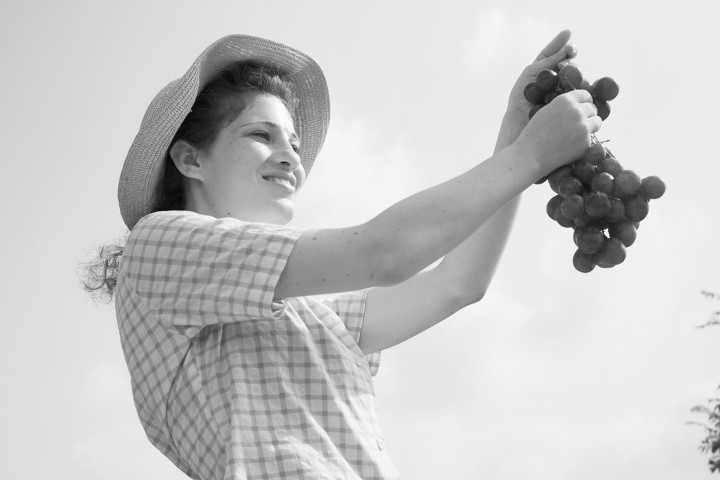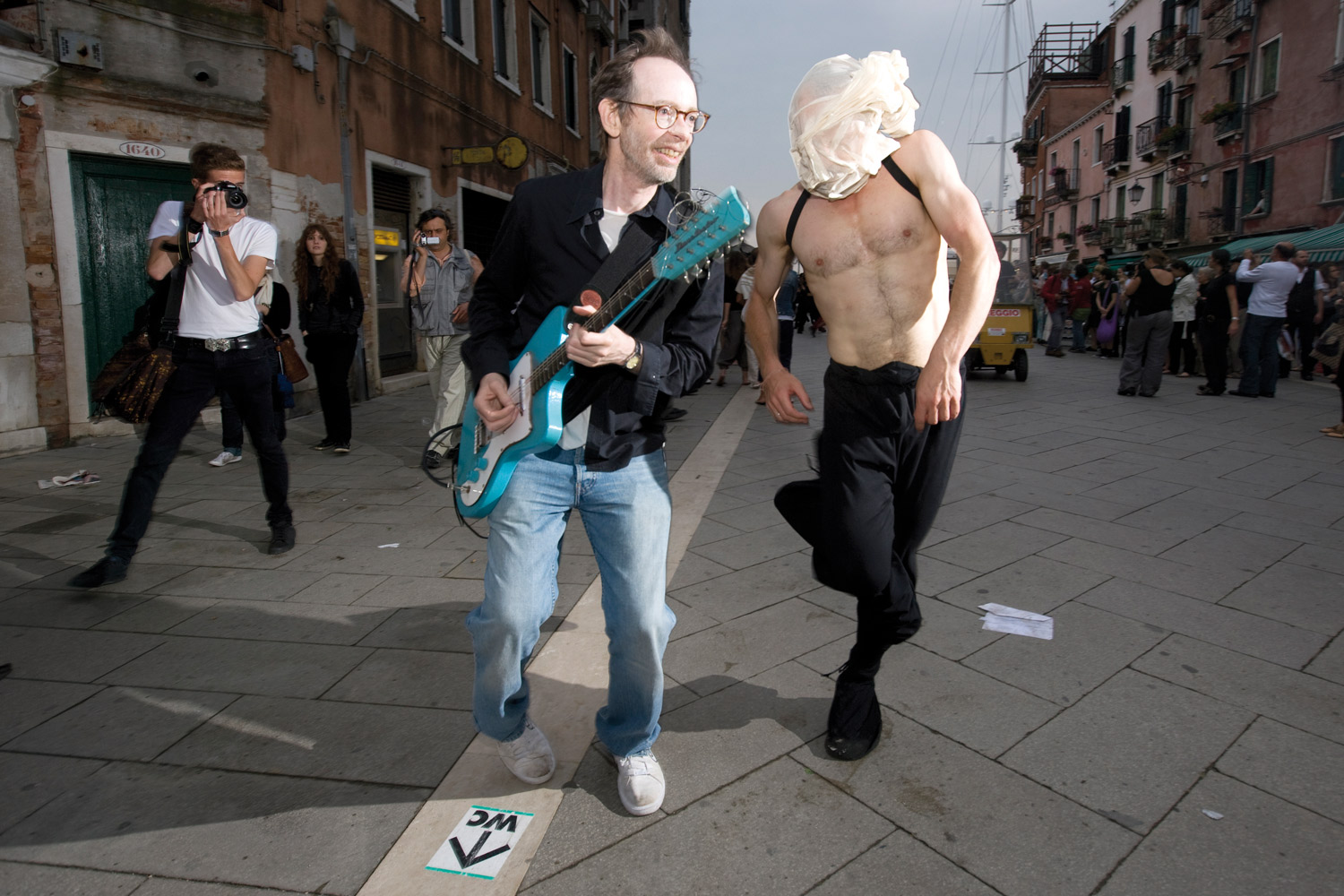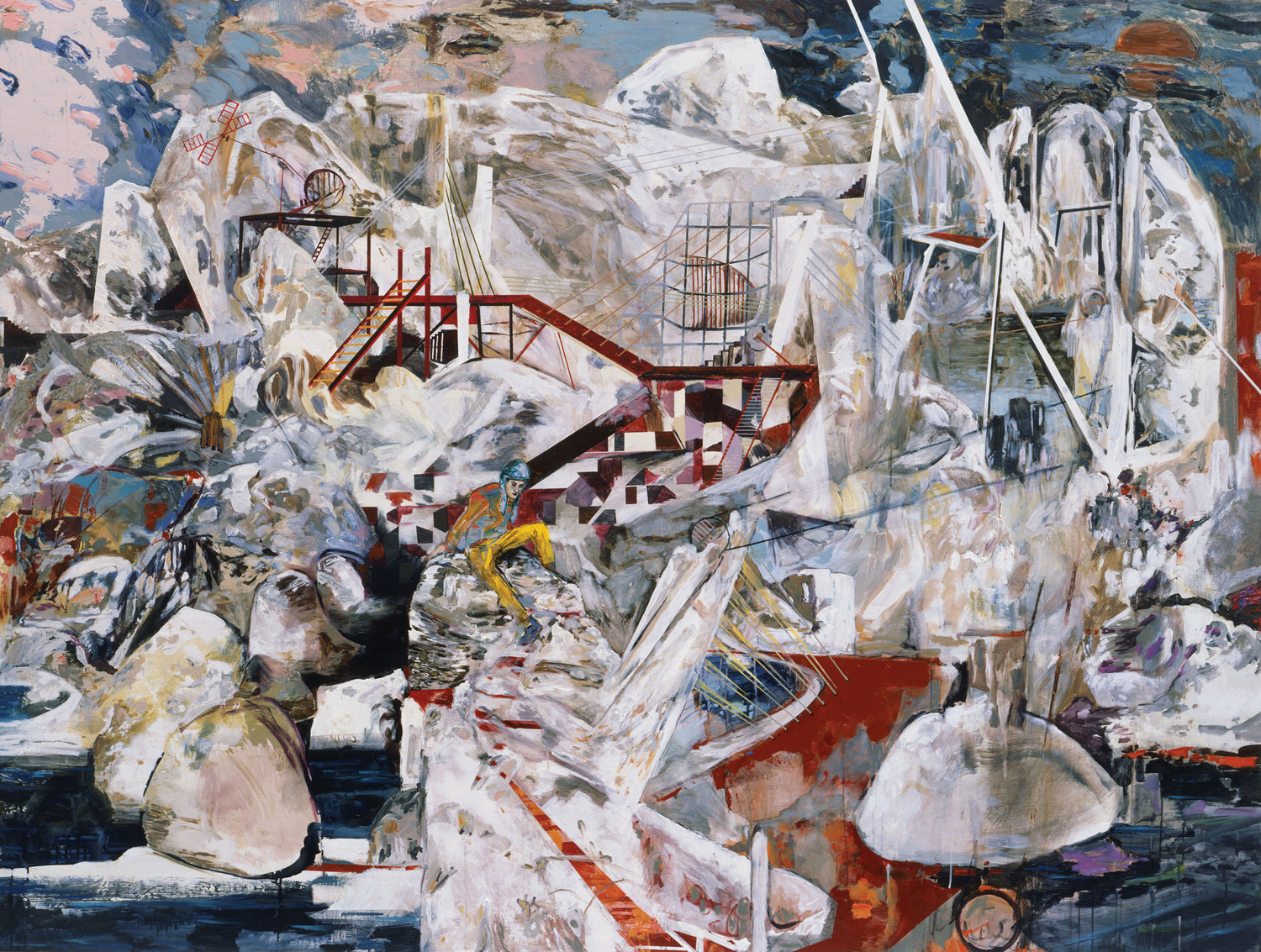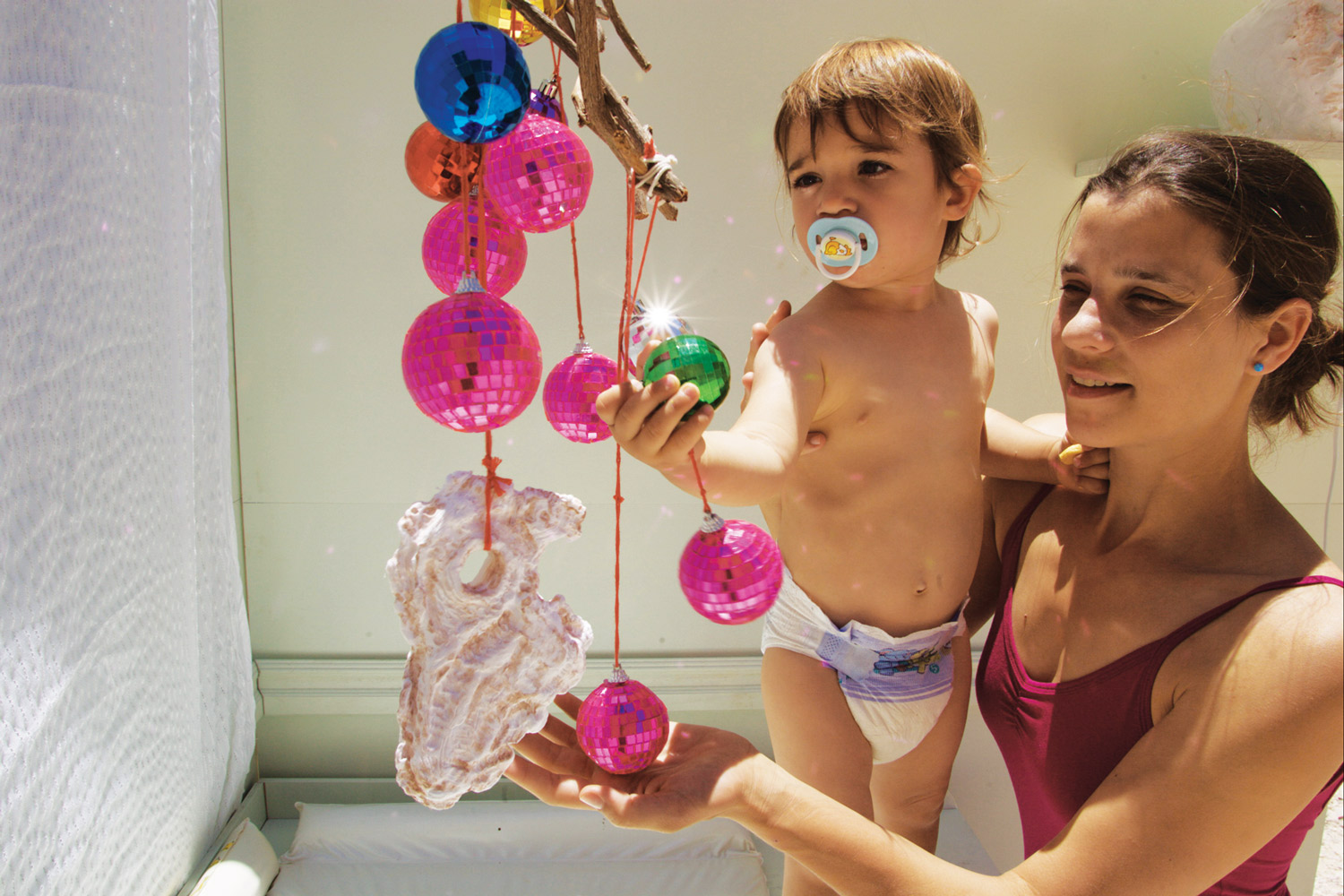
Nicola Trezzi: Daniel, when I approached you about this feature you replied saying the title was a pertinent issue for you, because you were born in London to a Zimbabwean mother and a South African father; then, when you were six months old, your family moved to Jerusalem, where you lived until you accomplished your three-year military service. You said also that Jerusalem came out recently in “Studies for Adam and Eve,” a show held this year at SE8 in London. Could you please tell us about this project?
Daniel Silver: Last year I found a book in a charity shop near my studio — the book featured photos of Jerusalem in the late ’70s. These photos reminded me of the city as it was for me. My father is a doctor and, as a child, we would go to meet a patient of his in Jerusalem old city. For “Studies for Adam and Eve” I was invited to make works within three cabinets of curiosities. I covered one cabinet in a Syrian fabric that a friend brought over from the old city, on the fabric I placed two oak wood carvings and a broken statuary marble head. In the second cabinet I placed pages from the book I found with some broken African sculptures I bought in a pound shop in Brixton and, in the third cabinet, I placed a ceramic object, like an urn, covered in self-drying clay, together with a Menorah-like object made from self-drying clay and partly covered in plaster. This was the first time that Jerusalem appeared so clearly in my work. I’ve been working with broken copies of Roman sculptures sourced in the studios in Pietrasanta in Italy. The broken sculptures remind me a lot of the ones I saw as a child in Israel. Jerusalem tells stories of thousands of years, not just those of the last six decades. I think of my work as fluctuating within these eras, in an ancient and modern way.

Elad Lassry: I love the fact that they remind you of your childhood. In graduate school I found a few old books about Israel in the University of Southern California library; they seemed so foreign. I enjoyed looking through them mainly because I felt like I was looking through a complicated construction; each book had its thesis. Photos of the inception of Israel resembled, in my strange view, the photographs of Dorothea Lange in California. Israel looked like California, with blond hair everywhere.
DS: I think you are right to find this fascinating. The images in the book are really taken by an American couple and it’s their point of view — maybe since my parents were fresh immigrants, I grew to see Jerusalem as a foreigner.
NT: Speaking of memory, I’d like to hear from Ohad, who was born in the Kibbutz Mizrah — where your grandparents moved from Poland, led by early Zionism. Then your parents left the Kibbutz when you were very young, giving you the chance to have experienced the kibbutz model as an outsider/guest. Would you like to talk about the use of kibbutz in your work?
Ohad Meromi: Beyond the title of this discussion, Israel itself is for me so much about collective identities, and about representation. Somewhat because of that I tend to always start with apologetics, to state ones position against things, which is just another way to still speak for the collective. It’s an impulse I have been trying to resist. It’s also interesting that we are starting to talk through old photographs, looking at another moment in time. It is only in the past few years that I have been working directly with Zionist imagery as source material. Before that, I worked through these uncanny instances of resemblance that Elad mentions. The kibbutz, too, was never really a first-hand memory for me. Working with architecture as a social agent of change, and the idea of the model, brought me back to the early kibbutz when I was working with Bertolt Brecht’s learning play The Exception and the Rule, using the play as a framework for an on-site participatory workshop and experimenting with models of social engagement and collectivity. The English translation I was reading mentioned that the play was first produced in the Kibbutz Givat Brener in Israel in 1938, by the members of the collective, who translated it themselves and wrote their own musical score. In my rendition, race took the place of class from the original play. Race was another big blind spot in the kibbutz’s utopia. The next piece I made, Who Owns the World? (2008) (borrowing only the title from Brecht), was a stage set of a series of rooms devoted to the specific architectural function of living in a commune — a workers’ club, a sleeping quarters, a room for sharing clothing, etc.
My main interest in going back to the kibbutz, or to Brecht, was an attempt to experience a moment where art and the social are embedded in one another, where discussions of style and representation are directly linked. Where the world is a place one makes. We make. Again I speak for a “we.”

NT: In a conversation published in Flash Art, Klaus Biesenbach mentioned you Yael, saying that you are “an artist who travels and translates your convictions and aesthetics into a local setting.” When you first emailed me back about this correspondence I saw your signature and below five telephone numbers, so you can be reachable in Israel, Netherlands, Germany, United States, and Poland. I felt that was a sort of ‘unconscious’ artist’s statement. Would you like to talk about your condition as a possible way to understand your work?
Yael Bartana: I guess my 5 mobile numbers are representing my restless conditions… or perhaps the modern wandering Jew. A form of mystification somehow. But I would like in fact to continue the discussion on the kibbutz — I was not born in a kibbutz but in a Moshav, which is also an agriculture-based community, however not one which shares socialist values. For the last five years I have been focusing on early Zionist propaganda films produced by the Jewish National Fund. In my recent projects like Summer Camp (2007), I also presented a new edited version of the film Avodah (1935) by Helmar Lerski. My kibbutz project Mur i wieża (2009) is a new production showcased in Poland. It is a sequel to my film Mary Koszmary (Nightmares)(2007), in which a young Polish left-wing activist delivers a fiery speech in the deserted stadium in Warsaw, asking three million Jews to return to their homeland and help the Polish with their nightmares. The new film will focus on a fictional situation where a group of young Israelis and Jews have decided to accept the invitation to return to Poland. Together they establish the first wall-and-tower kibbutz in the former Warsaw Ghetto: Kibbutz Muranov. For this project I created a fictional movement, “The Jewish Renaissance Movement in Poland.” I learned that a right-wing guy is organizing a parade against the Jewish renaissance movement! It is scheduled for the 1st of September 2009 and will take place in Lodz in the Freedom Square!!!
NT: And then?
YB: My new project is again an attempt to invert history. The settlement erected in the film follows the spirit of emergency and is made of wood and designed with the same basic architecture, symbolized by a protecting fence and a tower in the middle. The settlement’s simplicity declares a presence, while at the same time sends a message of alienation and hostility. The film will draw attention to this tension existing between the settlers as immigrants and their possibilities to assimilate and find an identity in Poland and in Europe. My interest in art making has grown to high degree of “direct symbolism” in order to trigger history, actuality, Homeland, Nationalism, personal and collective memory. I cannot bear the fact of living in a great denial of racism, ignorance and humiliation. I search for ways in which I can challenge “actual conditions” in society. A kibbutz is a fascinating social structure and defiantly the ‘we’ is one of its most important symbols.

NT: I would like to hear Elad’s thoughts since to me his work is the ‘least’ Israeli among you. To me it deals more with the photographic tradition with which America is imbued, a dangerous marriage between advertising and semiotics. When we met at the Whitney Museum you told me that the presentation of your work is extremely important. Could you frame this more precisely?
EL: Aesthetics of “photographic objectivity” can be traced back to August Sanders, the German school and so on… the seamless commercial photograph is dated back to the inception of photography and the trade of goods. I don’t know if I agree that this is an American investment more than a visualization of what arose as a Structuralist investigation. The reason I’m emphasizing that is because I don’t think an image has a specific address; it is suspended and traveled and lacking an author. I think of the pictures I make as wandering sculptures.
OM: What is up with the wandering metaphor? Why is having five mobile numbers related to the wandering Jew more than it relates to a certain type of international artist? Why is Elad the ‘least’ Israeli of us? Who, then, is the most Israeli? And what is with the Italian long-term investment in these national categories? Nicola, it’s your turn. And for my two cents: I think good art has much more to do with cities than with states.
NT: To me it’s very American, although to hear him defining his work “wandering sculptures” opens up a new set of unexpected interpretations. Furthermore I think the wandering Jew can be seen as a trope to understand contemporaneousness. Diaspora can signify globalization avant la lettre. To me national categories are just a trick that I ‘manipulate’ in order to deliver issues that are universal. When Flash Art established this structure based upon geography in the late ’60s, the world was different. Working on the archive of the magazine in Milan I discovered special issues on Russia (USSR at that time) and issues published in Polish and Chinese when the art field was still very provincial. So it came naturally for me to use Focus Israel as a way to explore and maybe deny this conformation.
YB: I see why Ohad would get annoyed by this term. When I try to define myself as an artist, I prefer to say “artist from Israel” instead of “Israeli artist” because the term “Israeli artist” refers to nationality and to the representation of the state. And since I very much oppose the policy of the state of Israel, I don’t want to be defined as an “Israeli artist.”
EL: The strange reaction of Ohad seems to suggest a sensitivity around terminology that I don’t really comprehend. Is this a fear that one’s nationality will take over the work? What is the source for the defensive reaction? Were there any values attached that I was not aware of? I grew up in Tel Aviv and collected culture from everywhere I could. Then I moved. I find these facts quite uninteresting.

OM: Let me just try and clarify my position: I suppose I am unable to go beyond a sensitivity to some terms, which have to do with a sense of responsibility I cannot avoid. Being an Israeli, and an Israeli artist at this point in history, is not a position that I can take or leave as simply as I would maybe wish to. The very specific set of requirements by which the state of Israel and the bulk of its society defines one as Israeli (Are you Jewish? Did you serve in the army?) prevents me from taking it lightly, and move on to speak as a citizen of the world. I was picking on the term ‘
“wandering Jew” because too many times the invocation of the image of the persecuted Jew serves to conceal contemporary Israeli/Jewish persecutions. The further away I am from Tel Aviv — and as I engage in conversations with people and artists who come from other backgrounds — the more I feel the need to acknowledge my background and be responsible with the terms I use.
DS: Going back to Ohad’s two cents that good art is much more to do with cities than states: I very much agree. I’d like to add that the move between the cities is enriching, exciting, full of contradictions and difficulties. Most times the gap is large and one tries to make something of it. Wanting to find a bridge or a solid ground. For me its hard to think that an artist’s biography has no relation to his art and the reading of his works; and in this sense the facts of where we grew up, what we saw around us, where we moved to, etc. are important and meaningful. Whenever I land in Israel I sense this very strong energy — I think it’s the place and the people, and it’s inescapable.





